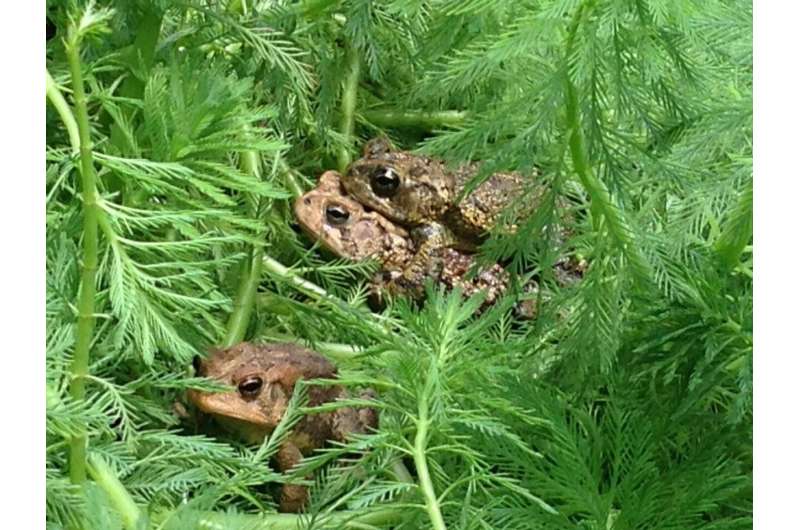When naproxen breaks down, toads croak

A new study in Environmental Toxicology and Chemistry takes a harder look at the effects a common anti-inflammatory medication and its degradation products have on amphibians. There have been many studies that review the toxicity of naproxen, a common over-the-counter pain reliever, but none until now that have reviewed the effects it or its degradation products might have on amphibians.
Almost 95% of naproxen ingested by an individual is ultimately excreted. Wastewater treatment plants are not equipped to remove the drug, so it, along with other pharmaceuticals, are often discharged into waterways untouched. Naproxen (NAP) itself degrades when exposed to sunlight, but not before casting off two primary phototransformation (PT) products, 1-(6-methoxy-2-naphthyl) ethanol (NAP-PT1) and 2-acetyl-6-methoxynaphthalene (NAP-PT2). Researchers evaluated the amount of time it took these products to degrade and measured their toxicity individually and in mixtures to southern toad larvae. Toads were selected as the model organism to test since amphibian larvae can be prevalent in habitats with risk of exposure to pharmaceuticals like naproxen.
Lead authors Allison Welch and Wendy Cory, both of the College of Charleston, and their colleagues found that these PT products not only persisted in the environment longer than naproxen, but NAP-PT1 was six times more toxic to the southern toad larvae, and NAP-PT2 was up to 15 times more toxic to the amphibians. Welch noted that, "our results demonstrate that a relatively safe pharmaceutical can be transformed into compounds and mixtures that are many times more toxic and underscore the need to consider the consequences of pharmaceutical transformation when evaluating the risks posed by pharmaceuticals in the environment." The study highlights the need to evaluate the full life cycle of medications to properly understand their effect on the environment.
More information: Wendy C. Cory et al, Naproxen and Its Phototransformation Products: Persistence and Ecotoxicity to Toad Tadpoles ( Anaxyrus terrestris ), Individually and in Mixtures, Environmental Toxicology and Chemistry (2019). DOI: 10.1002/etc.4514
Journal information: Environmental Toxicology and Chemistry
Provided by Society of Environmental Toxicology and Chemistry


















